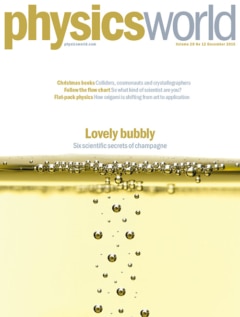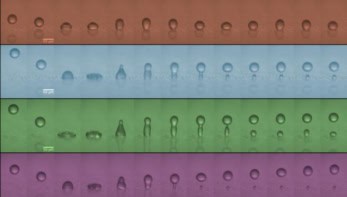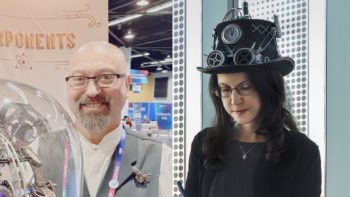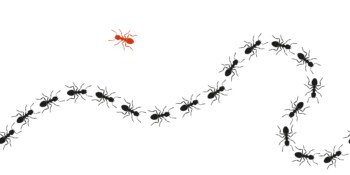As the festive season approaches, many of you will be looking forward to popping open a bottle of champagne. But before you treat yourself to a bottle, do check out the December 2015 issue of Physics World magazine, in which fizzy-wine physicist Gérard Liger-Belair from the University of Reims Champagne-Ardenne reveals his top six champagne secrets.
In the article, Liger-Belair explains why a fog appears when you pop open a bottle, the angle at which you should pour the wine into a glass, and how many bubbles there are in a typical glass of fizz. He also wades into that age-old question among sparkling-wine aficionados: flute or coupe?
The new issue also contains a fabulous flow chart, in which you can find out what sort of scientist you are. Don’t miss either our look back at the International Year of Light, a fantastic selection of Christmas books and a feature all about how origami is moving from art to application.
If you’re a member of the Institute of Physics (IOP), you can get immediate access to this article in the award-winning digital edition of the magazine on your desktop via MyIOP.org or on any iOS or Android smartphone or tablet via the Physics World app, available from the App Store and Google Play. If you’re not yet in the IOP, you can join as an IOPiMember for just £15, €20 or $25 a year to get full digital access to Physics World. You can also read Liger-Belair’s article online here.
For the record, here’s a rundown of the rest of the issue:

• Exergy: less heat, more light – Governments and industry could make better use of energy by turning to the second law of thermodynamics. Edwin Cartlidge describes a new proposal by European scientists
• Mexico’s challenges – Matin Durrani talks to Enrique Cabrero Mendoza, director of Mexico’s National Council for Science and Technology (CONACYT), about its science and
technology priorities
• Leaving a legacy for light – As the 2015 International Year of Light draws to a close, leading figures reveal how to build on its success
• Logo motives – Robert P Crease relays feedback from his earlier column on physics logos
• Six secrets of champagne – Popping open a bottle of champagne is one of life’s great delights, but how much do you really know about the science behind this greatest of wines? Gérard Liger-Belair reveals his six favourite champagne secrets
• Flat-pack physics – From solar panels to nanoscale machines, physics applications of origami and kirigami have surged in recent years. Simon Perks reports from where art meets science
• Throwing the book at bad ideas – Several eminent science authors have recently claimed that bad scientific ideas have “held back” good ones throughout human history, delaying the progress of science. But as Philip Ball argues, it just isn’t that simple
• The great high-energy write-off – Andrew Robinson reviews Tunnel Visions: the Rise and Fall of the Superconducting Super Collider by Michael Riordan, Lillian Hoddeson and Adrienne W Kolb
• Physics in the family – Mark Spackman reviews Crystal Clear: the Autobiographies of Sir Lawrence & Lady Bragg edited by A M Glazer and Patience Thomson
• Dripping with science – Helen Maynard-Casely reviews The Water Book: the Extraordinary Story of Our Most Ordinary Substance by Alok Jha
• Nature’s ups and downs – Peter Rodgers reviews Making Nature: the History of a Scientific Journal by Melinda Baldwin
• Teaching with technology – When David Vernier left his job as a physics teacher to start his own company, he discovered that lessons learned in the classroom would serve him well in the business world
• Once a physicist – Emanuel Derman, professor of financial engineering at Columbia University, New York, US, and the author of My Life as a Quant: Reflections on Physics and Finance
• What kind of scientist are you? – Solve your holiday identity crisis with physicist Eugene Hickey and designer Paul Matson



